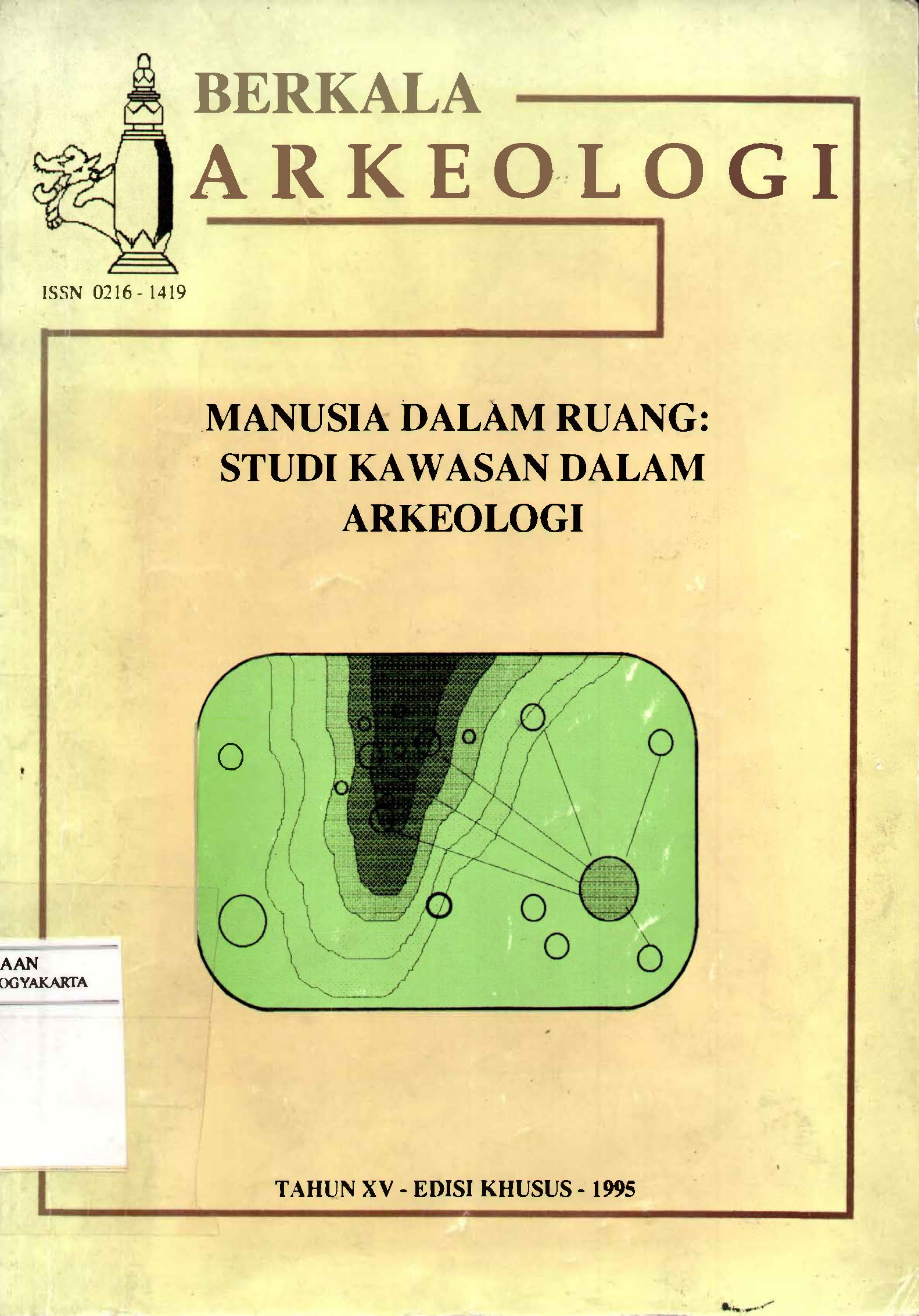KEGIATAN PERDAGANGAN: SUATU PENJELASAN BERDASARKAN TEORI SIMBOLIS
Main Article Content
Abstract
Trade is a system composed of various components related to one another. This system is very flexible in scope, both time and area coverage. One another can be seen by each component but it will be clearer when viewed globally. This specificity is what makes the trading system have similarities and differences between one area and another, with varying times. This is because it is influenced by various factors, from outside as well as from within the system itself. The differences that exist arise, among others, due to the existence of political-economic-religious activities which ultimately affect the changes in human supporters. A summary of the archaeological-historical data will be used in analyzing trading activities in Indonesia from past to present.
Article Details

This work is licensed under a Creative Commons Attribution-NonCommercial-ShareAlike 4.0 International License.
References
Braudel, Fernand. 1985.(Trans by Sian Reynolds) Civilization and Capitalism 15th-18th Century: The·Perpective of the World, London, Fontana.
Chaudhuri, K.N., 1985, Trade and Civilisation in the Indian Ocean: an Economic History from the Rise of Islam to 1750, Cambridge, Cambridge University Press.
Chaudhuri, K.N., 1978, The Trading World of Asia and the English East India Company, Cambridge, Cambridge University Press.
Cortesao, A, 1944. (tran. }, The Suma Oriental of Tome Pires and Account of the East, from the Red Sea to Japan, Written in Malacca and India in 1511-1515 London The Hakluyt Society
Curtin.Philip D., 1984.Cross-Cultural Trade in World History, Cambridge: Cambridge University Press.
Davis, John., 1992, Exchange, Minneapolis, University of Minneapolis Press.
Drakard,Jane., 1987 .An Indian Ocean Port: Sources for the Earlier History of Barus, Archipel, 37, pp. 53-82.
Eerste Voyagie naer de oost-lndien onder Cornelis Houtman, in I Commelin (ed.}, 1624. Begin ende Voortgangh van de Vereenighde Neer-landsche Geoctroveerde Oost-lndische Companie, 't Eerste Dell, Amsterdam.
Foster, Sir William., 1934. The Voyages of Sir James Lancaster to Brazil and the East Indies 1591-1603, London, Hakluyt Society.
Foster, sir William, 1940, The Voyage of Thomas Best to the East Indies 1612-1614, London, Hakluyt.
Foster, Sir William., 1943.The Voyage of the Henry Middleton to the Moluccas 1604-1606, London, Hakluyt Society.
Gauld, Richard A, and Michael B. Schiffer (ed.), 1981.Modern Material Culture: the Archaeology of Us, New York:Acadeic Press.
Geertz, Clifford., 1983.Local Knowledge, London, Fontana Press.
Gelpke, JHF Sollewijn., 1994. The Report of Miguel Roxo de Britto of his Voyage in 1581-1582 to the Raja Ampat, the MacCluer Gulf and Seram, Bijdragen tot de Taal-, Land-en Volkenkunde, deel 150, 1e Aflering, pp. 123-145
Hodder, Ian., 1991. Reading the Past: Current Approaches to Interpretation in Archaeology, Cambridge, Cambridge University Press.
Kathirithamby-Wells, J., 1987.Forces of Regional and States Integration in the Western Archipelago c. 1500-1700, Journal of Southeast Asian Studies, vol.XVIII ( 1 ), March, pp.24-44
Knaap, Gerrit J., 1983. Some Observations on a Thriving Dancing-Party: The Cultivation of and the Competition for Clove in Sixteenth and Seventeenth Centuries Ambon, Papers of the Fourth Indonesian-Dutch History Conference, Yogyakarta.
Knaap, Gerrit J., 1993. The Saniri Tiga Air (Seram): an Account of Its 'Discovery' and Interpretation between about 1675-1950, Bijdragen tot de Taal-, Land-en Volkenkunde, deel 149, 2e Aflering, pp 250-273.
Lewis, IM. 1976. Social Anthropology in Perspective: the Relevance of Social Anthropology Cambridge: Cambridge University Press
Meilink-Roelofsz, M.A.P., 1962. Asian Trade and European Influence in the Indonesian Archipelago between 1500 and about 1630, The Hague, Martinus Nijhoff.
Nayati,Widya., 1994. The Archaeology of Trading Sites in the Indonesian Archipelago in the Sixteenth and Seventeenth Centuries: Possibilities and Limitations of the Evidence, Master Thesis Australian National University.
Nayati,Widya., 1994. Perubahan-Perubahan Konsentrasi Perdagangan di Kepulauan Nusantara abad 16-17, Ceramah HIMA-UGM.
Nurhakim, Lukman, 1989.La Ville de Barus: Etude Archaeologique Preliminarie, Archipel 37, pp. 43-52.
Pryor.Frederic L., 1977.The Origins of the Economy: a Comparative Study of Distribution in Primitive and Present Economies. New York, Academic Press.
Reid, Anthony., 1992. Economis and Social Change, C 1400-1800, in Nicholas Tarling ·(ed.). The Cambridge History of Southeast Asia, Volume One, Cambridge: Cambridge University Press, pp. 460-507.
Reid.Anthony, 1993.Southeast Asia in the Age of Commerce 1450-1680, Volume two: Expansion and Crisis, New Heaven: Yale University Press.
Sen, S.P., 1962. Indian Textile in South-East Asian Trade in the Seventeenth Century, Journal Southeast Asian History, vol. 3, no. 2 September, pp. 92-110.
van Leur, J.C., 1955.lndonesian Trade and Society, The Hague, W. van Hoeve Ltd.
Wicks.Robert S.1992.Money, Market, and Trade in Early Southeast Asia the Development of Indigenous Monetary System to AD 1400 New York: Southeast Asian Program.

